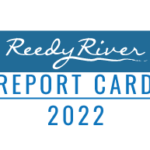From the Greenville News 9/30/15
Q: Who is responsible for cleaning the Reedy River?
Amy in short: While there are some entities — of both the highly regulated and largely volunteer varieties — that work to maintain the Reedy, everyone I talked to agreed river health is one of those “it takes a village” scenarios.
A bit more: Thankfully gone are the days when Greenville residents could tell what dyes were being used in the textile plants by the color of the river, but even in the absence of such direct dumping, the Reedy still faces some serious and longstanding pollution problems.
“There are 17 sites along the main stem of the Reedy River that are impaired for pollutants,” said Jim Beasley, spokesman for the state Department of Health and Environmental Control, which monitors water quality along the river.
The state List of Impaired Waters highlights where along the Reedy these “impairments” are found. Spoiler: it’s almost everywhere.
“The primary pollutant of concern for the Reedy River is excess nutrients such as nitrogen and phosphorus,” Beasley said. “(Nutrients) occur naturally and are essential for the aquatic ecosystem, but excess nutrients can result in algal blooms and fish kills.”
The Reedy River also contains unhealthy amounts of bacteria, thus the signs in Falls Park warning against taking a dip.
A relatively new group, the Reedy River Water Quality Group, is a collaboration of local governments, conservation groups and other stakeholders from along the length of the Reedy, from its headwaters in Travelers Rest to its terminus at Lake Greenwood, who are working together to address the river’s problems.
“The Reedy has had some water quality impairments for quite a long time,” said Heather Nix, clean air and water program director for Upstate Forever. “Everyone’s decided it’s time to fix this and figure out the best way to fix it for the long term… It’s important to the community for environmental, but also for economic reasons, that we do start meeting these standards.”
The group includes the city of Greenville, where the Reedy is perhaps at its most visible.
Jacqueline Chelbezan, a city environmental engineer, said Greenville is required by DHEC to provide public education and outreach about ways to reduce pollution, including picking up pet waste, keeping grass clippings out of storm drains and applying fertilizers judiciously.
“Everyone’s responsible for the Reedy River water quality,” she said. “They can’t regulate it to the point that it will be clean if you don’t have citizen buy-in.”
In addition to the invisible pollutants, the Reedy has perhaps more than its fair share of litter, something that various groups address with periodic cleanup events.
“Having trash in the river is obviously a pollutant itself, and it can cause problems with wildlife and it can cause problems with drainage,” said Dwayne Cooper, city engineer.
Friends of the Reedy River holds two cleanup events annually that have pulled everything from cups and plastic bottles to refrigerators, commodes, bicycles and tires from the water, said Nikki Grumbine, group president.
Conservation groups like Friends of the Reedy River and Upstate Forever are an important piece of the puzzle for the Reedy’s health, assisting with education and outreach events, implementing cleanup and pollution prevention programs, and advocating for the river.
What the Reedy doesn’t have, which many other major river systems in South Carolina do, is a Riverkeeper.
Riverkeepers, part of the national Waterkeeper Alliance, are “community-based river advocates,” said Bill Stangler, the Congaree Riverkeeper. His organization is based in Columbia and works to protect the Broad, Congaree and Saluda rivers in the midlands.
Others in South Carolina include the Savannah Riverkeeper, Santee Riverkeeper, Waccamaw Riverkeeper and Charleston Waterkeeper.
Stangler said his work includes outreach and education, responding to pollution concerns, water quality monitoring, organizing cleanups and even filing citizen lawsuits against polluters.
“Sometimes our (government) agencies don’t have the resources or the political will to do what needs to be done, and that’s why it’s so important to have a citizen-based watchdog organization like the Riverkeeper,” he said.
Interested Greenville residents do have one way to get more involved with the health of the Reedy. Adopt a Stream, operated by Upstate Forever, trains volunteers to monitor water quality along the Reedy River and its tributaries. Samples are taken monthly and results reported online.
One volunteer monitoring group found evidence of a sewage leak that had gone undetected, Nix said. Repairing stopped the flow of bacteria into the river.
Residents can also help protect the Reedy by limiting the amount of pollution that reaches its waters. Planting native plants near waterways, installing fewer impervious surfaces, reducing fertilizer and pesticide use (and being careful not to apply them shortly before rain is expected), picking up after animals, even reducing the amount of food that you put in your kitchen disposal can cut down on the amount of nutrients, bacteria and other pollutants in the river, Grumbine and Nix said.
“Everyone plays a role in what the water quality of the Reedy is,” Nix said.
Got a question? Send it to Q&Amy by emailing me at aburns@greenvillenews.com or calling 864-298-3822. You can find me on Twitter at @QandAmyNews.





